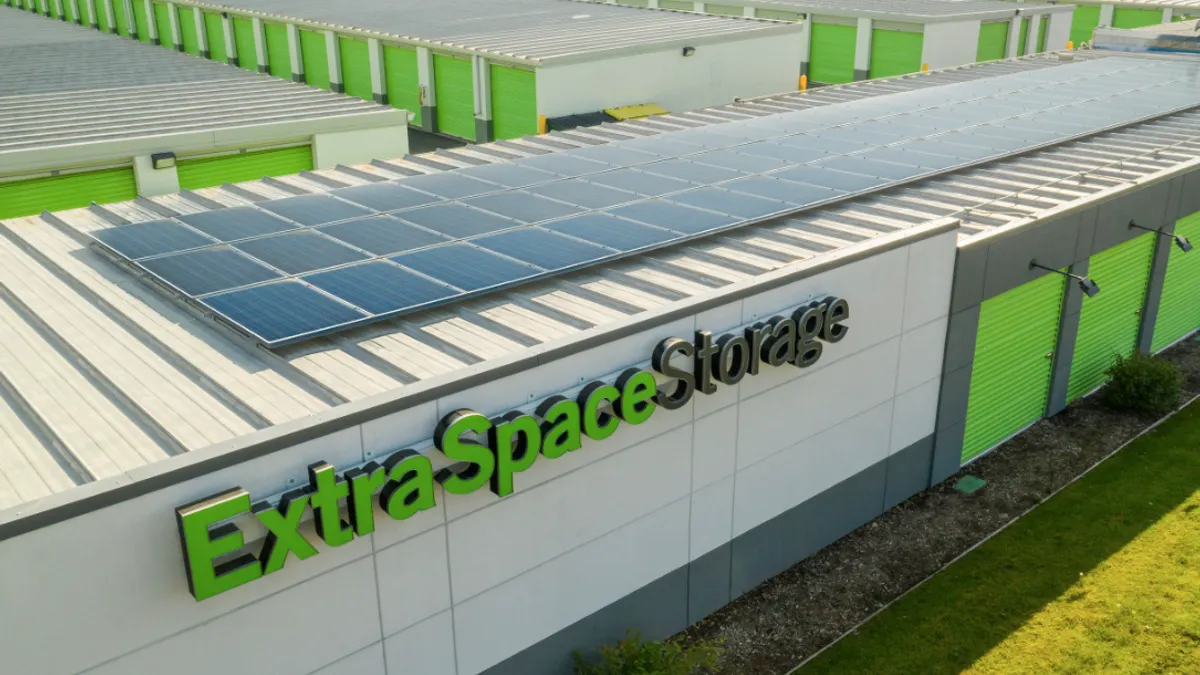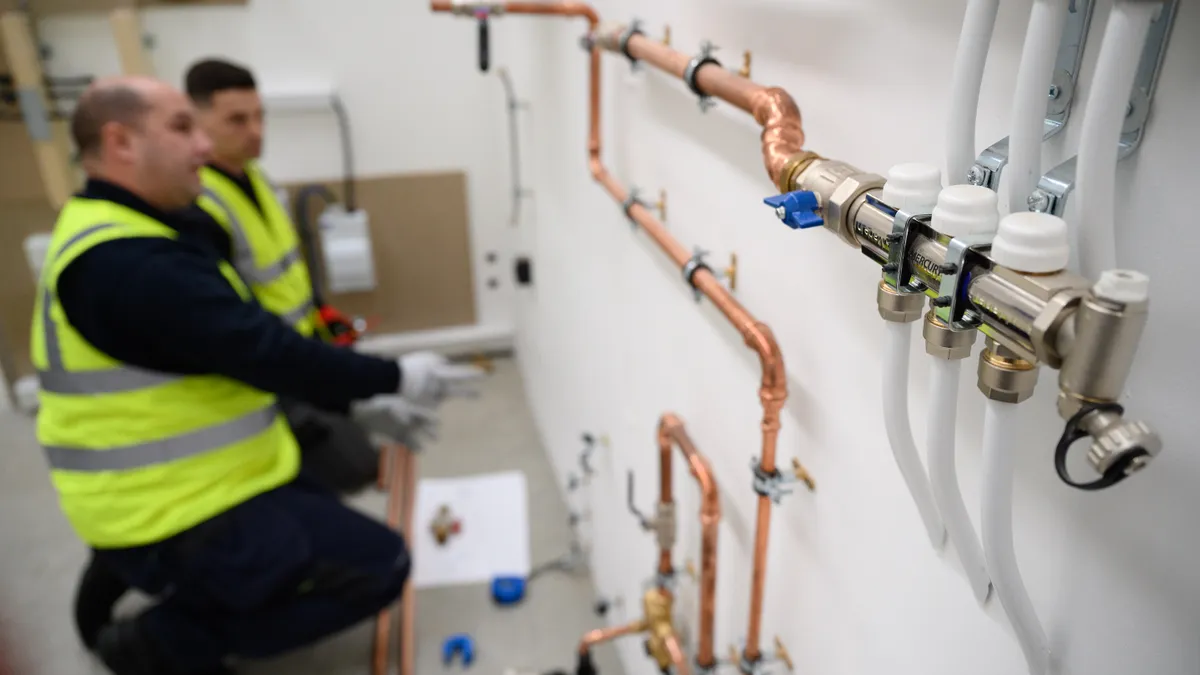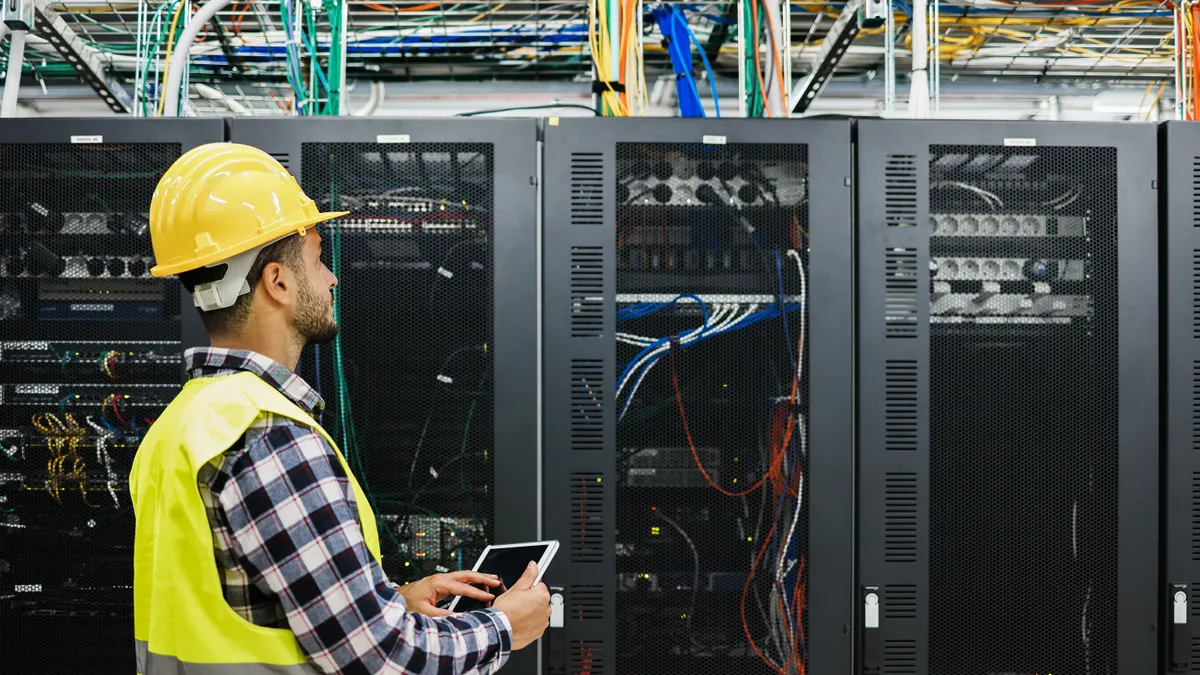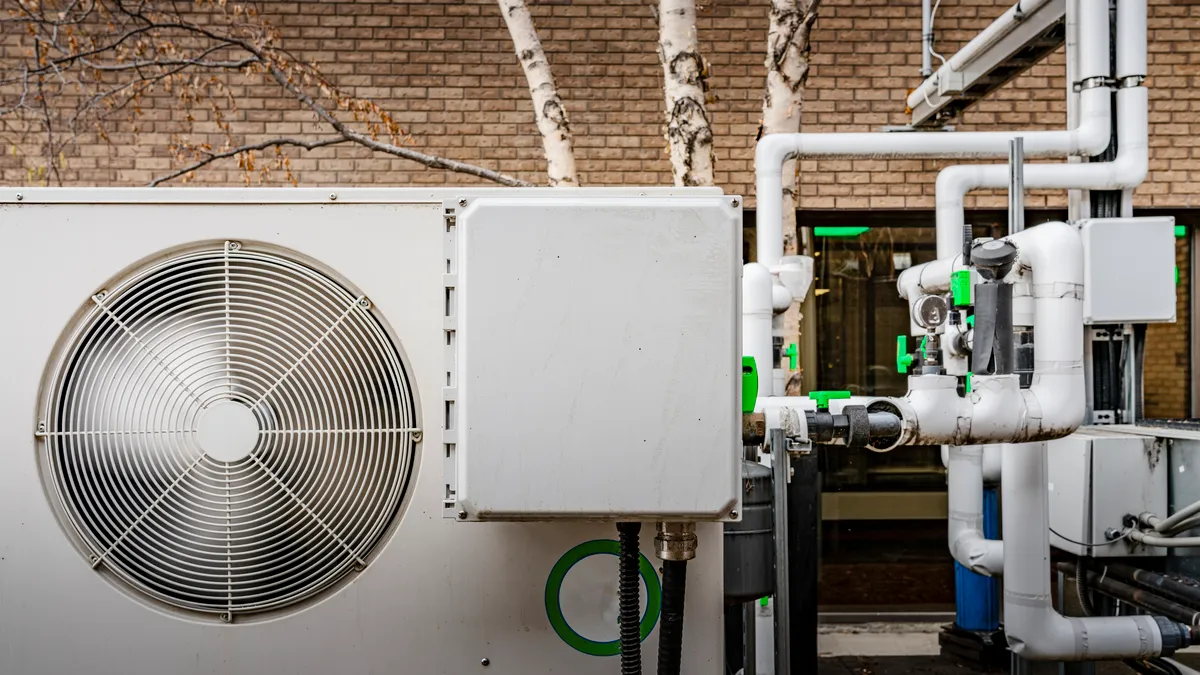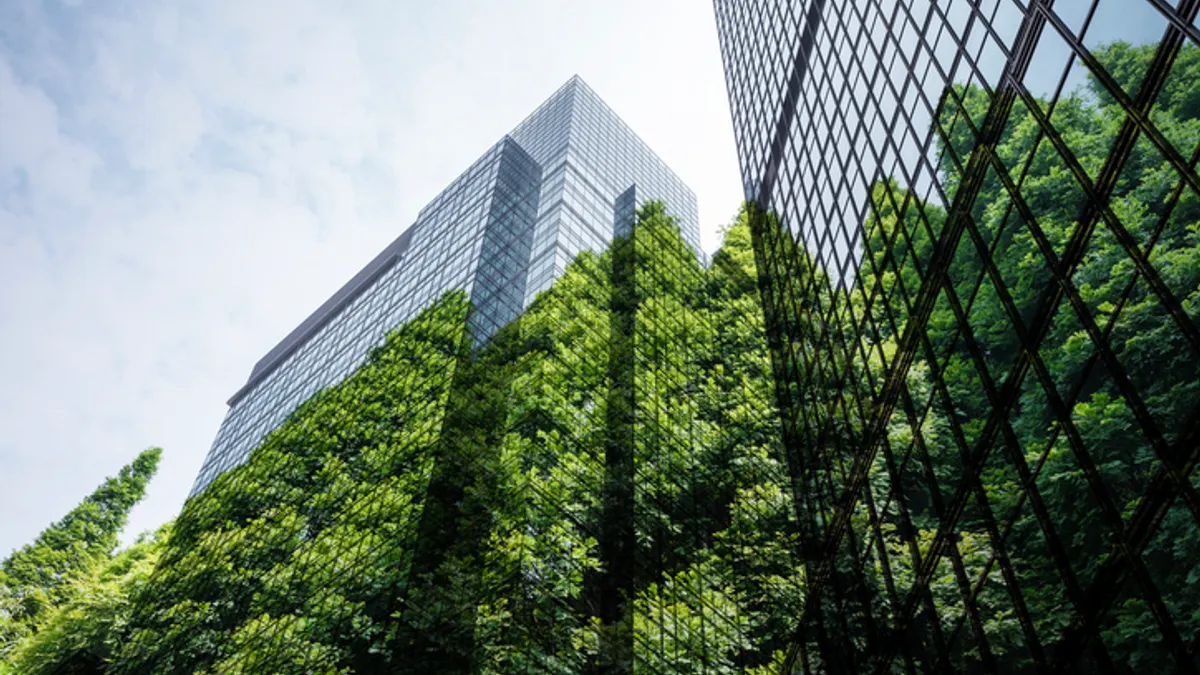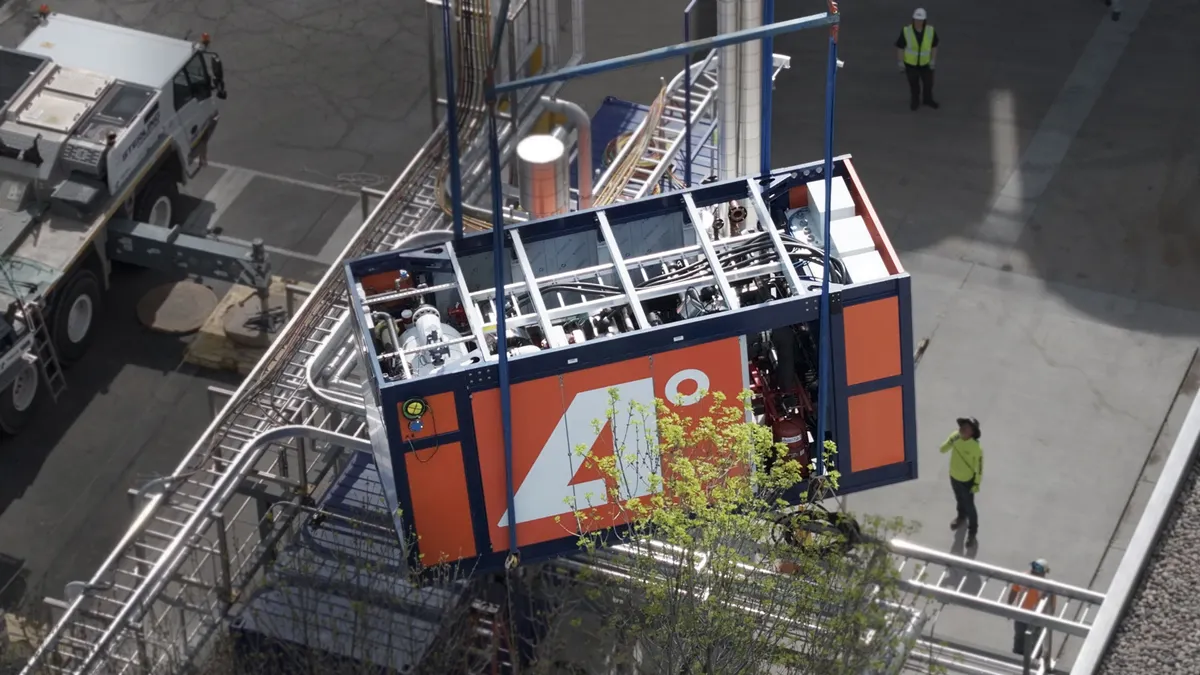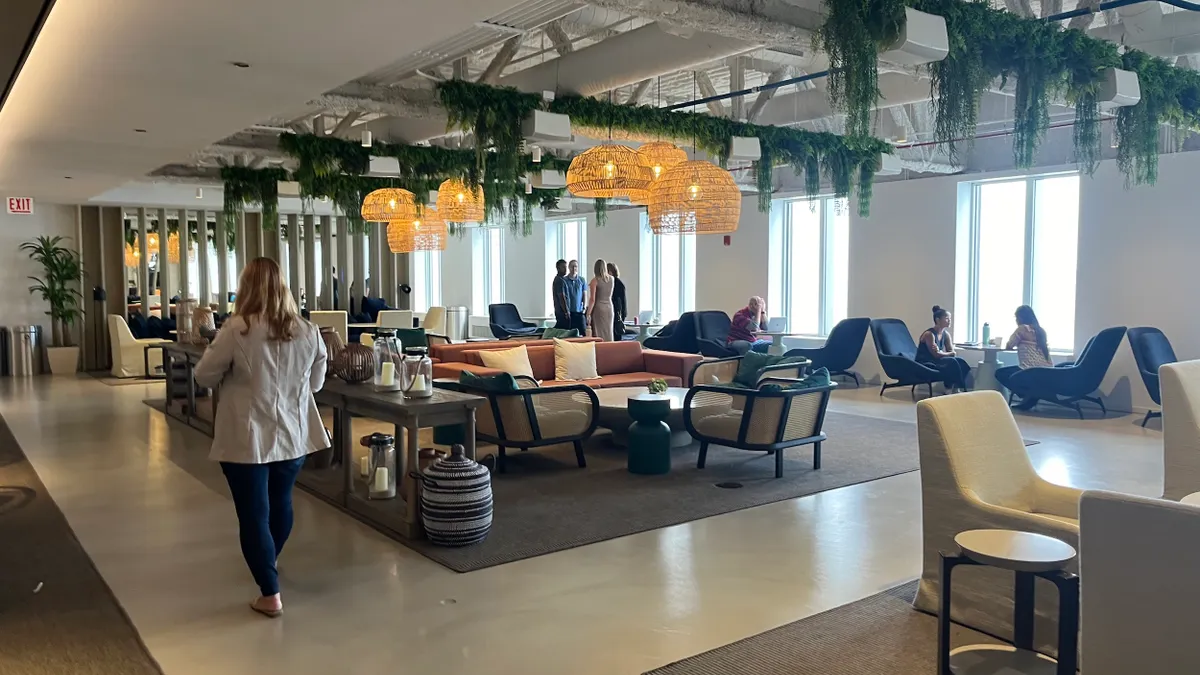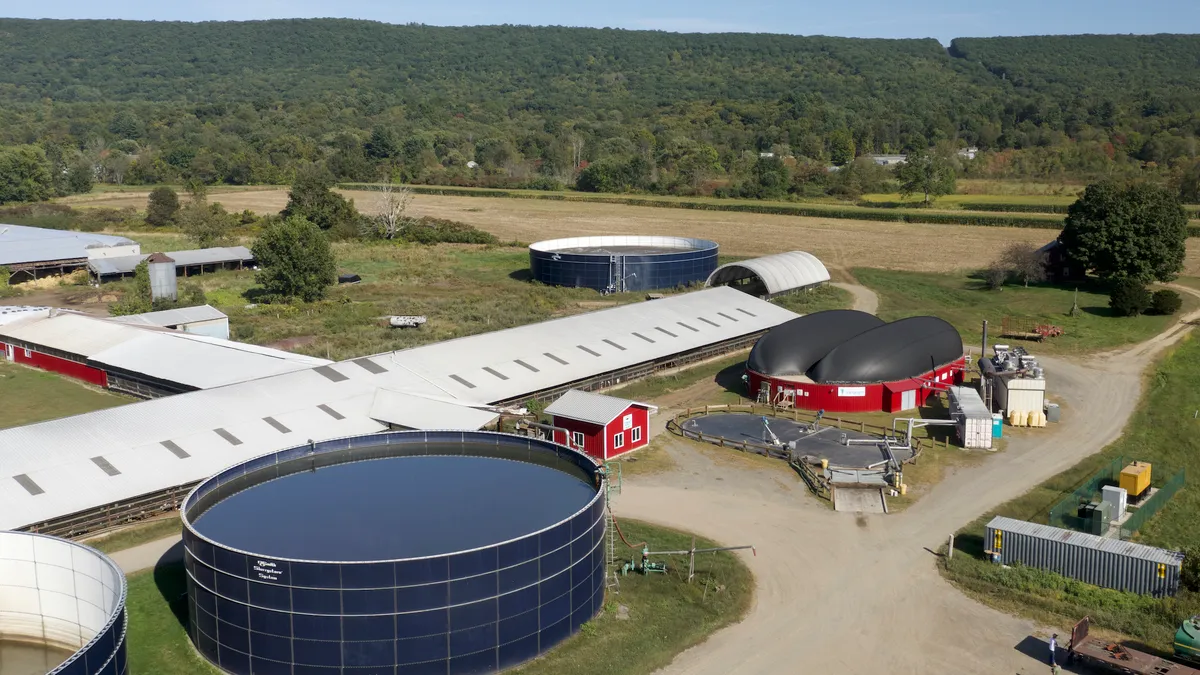After installing solar panels on the rooftops of more than 850 of its properties to offset its energy costs, Extra Space Storage is trying something new: leasing its rooftops to another company to install solar panels for low-cost energy generation for the local community.
The self-storage giant isn’t involved with the energy produced in these deals; instead, it’s generating revenue from leasing its space in a way that’s not too different from leasing space in its storage units.
“These are pure lease plays,” Steve Potter, senior manager for solar and sustainability projects at Extra Space Storage, told Facilities Dive.
The company moved into solar power more than a dozen years ago to leverage 30% federal tax credits. These tax credits were renewed in the 2022 Inflation Reduction Act and start winding down in 2033.
The solar arrays that it’s installed over the years are generating anywhere from 40 to 200 kilowatts of power at each site, all in behind-the-meter programs in which it owns the panels and benefits from the energy that’s generated.
“We might have a multistory building on a site that has the same number of units on three acres that another one, a drive-up building, has on 10 acres, so it varies drastically,” said Potter, who took over the solar program from a predecessor in 2020.

With some 4,200 buildings around the country, the company has room to grow the program before it taps out its portfolio of wholly-owned properties with behind-the-meter solar projects, Potter said. But in anticipation of the tax credits sunsetting in another decade, the company started looking at other ways to leverage its rooftops. That led to talks a few years ago with Solar Landscape, a community solar power provider that last month completed its first project with the company: a pilot in which Solar Landscape leased space on nine of Extra Space’s buildings in New Jersey to sell energy to nearby low- and moderate-income communities.
“They’re essentially creating a power plant on the roof and supplying energy to the community,” Potter said. “They have several of these in a dense radius on different facilities and they’re producing so much energy that they go out and get subscriptions from consumers and they manage those. So, they're operating essentially as a semi-power company.”
Shared space
With this pilot under its belt, Extra Space has a model for doing more of these, Potter said.
“These lease deals are typically much larger systems,” he said. “Community solar systems are typically 500 KW to 1 [megawatt].”
All of the solar arrays in the pilot share rooftop space with Extra Space’s own behind-the-meter panels.
“We already had that separate system offsetting our energy,” he said. “What we did is, we leased out the remainder of the roof space of those facilities for them to put their arrays. So now we have two separate systems. Ours is connected into our utility meter and theirs is being exported out.”
Not all of its properties are a good fit for hosting solar panels, either for their own use or to lease out to others, Potter said. If the roof is old, or if it otherwise needs to be reinforced, it might not make financial sense to invest in upgrades.
“On some of the older buildings, maybe the structure isn’t built up as much because it wasn’t intended for that, so you might have to do some structural reinforcement,” he said. “It could be the roof is aging and you want to replace fasteners or do a coating. You don’t want smaller holes that become hard to trace once you have the solar on there.”
It’s a financial calculation to decide if the energy offset or lease payments that would be generated are enough to cover the cost of upgrades to the roof.
“You have to put that into your financial model to see if it’s worthwhile,” he said. In a lease deal, the roof needs to be good for 30 years for it to make sense, he said.
“Maybe you have an initial term of 20 years with multiple 5-year extensions,” he said
In the contract with Solar Landscape, the company has agreed to remove the panels and reinstall them at their cost if Extra Space needs to get access to the roof to replace or repair it.
“That’s a separate provision from giving us access for triage-type repairs that might come up over time,” he said.
Some facilities managers might be concerned the panels will reduce the useful life of the roof but the evidence isn’t clear on that, Potter said.
“You could say from a weight standpoint – a structural standpoint – that it puts extra strain on the roof,” he said. “But the flip side is that it’s a buffer between the sun and the roof and, in a lot of cases, it’s protective of the roof. So, a developer would make the case they’re actually extending the life of the roof, which is a valid point, as long as there aren’t any issues underneath them.”
Going forward, Extra Space Storage plans to continue installing panels for its own use but now, with the lease program piloted, it has this additional revenue source.
“We’ll pursue more but we're also conservative on the roof aspect of things,” he said. “You’re encumbering the property. You’re giving someone a long-term lease on a property. If you sell the building, you’re selling that lease as well. That’s a separate negotiation.”


